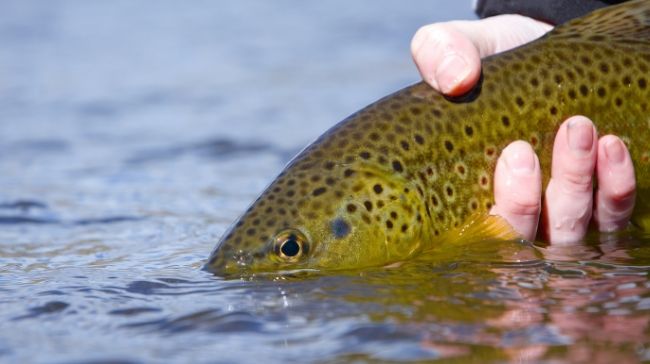Ive decided to write several short articles aimed at helping people that are new to the sport better understand what everyone else is talking about. There is so much hidden meaning behind what anglers say amongst each other and in the shop, as well as more acronyms than I think even the most experienced angler could remember in a lifetime so this is my attempt to help people just getting into the sport get caught up to speed.
This segment called "Bug Parts" is for new tyers. When tying flies you hear people referring to what materials they used for the various parts of the bug they are tying. For instance, "I used black fine and dry dubbing for the Trico's thorax". For the second year tyer that might make perfect sense but for the rest of the human population what does that mean?
Photo and fly by Jon Kleis

Mayflies in both their nymph and adult stage's are divided into several different parts. We will start with the adult mayfly. The first and most obvious part is the
tail which is followed by the abdomen. The
abdomen on the fly pictured is tied with black thread and a crystal flash overbody that is wrapped forward (
wrapping a material forward is sometimes refered to as palmering or palmered) around the hook shank. The second obvious part of this imitation of an adult Trico is the
wing which in this case is tied with white Antron yarn and is laid out on either side and imitates a spent spinner. The
thorax is just behind the head of the fly where the wing connects and is the thickest part of the bug and is tied with thread for this example. And of course the head of the fly is where you finished your bug and tied off your thread using a whip finish knot.
 |
| Click on photo to enlarge for a better view |
This next photo is of a natural Trico spent spinner. Adult mayflies become "spinners" when they mate and lay their eggs. The mating ritual is towards the end of the mayflies life cycle. After they lay their eggs they fall to the water from exhaustion in what we refer to as the "Spinner Fall" and then die. The aerial dance combined with how the bugs look as they fall to the water to deposit eggs and die is how this stage of the hatch was named. If a fly is tied like the one I made in the above photo with the wings splayed out to the sides it is refered to as a spinner.
Here is another example of a spinner. Can you correctly identify the parts of this bug and what materials were used to tie each part?
Before Mayflies become spinners they emerge to become Duns which is the first adult stage of the bug after it has emerged and is free of its nymphal shuck. The Dun trico has a short tail and tends to be a light olive or tan color instead of black like you see on a spinner, even though my favorite fly to fish all the way through the trico hatch from start to finish is the John Barr pattern called the Viz-a-dun and is black in color. Duns also have strong wings that stand mostly upright. The parts of the Dun as it pertains to tying are refered to using the same terminology as a spinner (tail, abdomen,wing, thorax). Just be aware that there are different colors and traits such as the upright wing that you are imitating while sitting at your vice tying duns.
 |
| Click on photo for enlarged view of this Parachute Adams |
The parachute adams is one of my favorite bugs to use when I know Baetis (also called the Blue Winged Olive, or B.W.O.) are emerging. Around March on the South Platte River you will see tiny blue gray Baetis hatching starting at mid day. Parachute flies are tied by anchoring your wing material (in this case white calf body hair) so thats it's facing up at a 90 degree angle. Your hackle which normally forms your dry fly's thorax is now being wrapped or palmered around the base of the upright wing to form a "parachute". What is great about tying parachutes to imitate duns is that they have the upright wing and they also sit low on the surface film like the naturals would right after they emerge.
 |
Barr's Viz-a-dun Trico. Notice the hackle is palmered around the hook to
form the thorax? This is how it's done on most traditional dry flies tied with
hackle. |
If there is anything I want you guys to take away from this read it is to have a better understanding of the four major parts of an adult mayfly pattern and also a clear understanding of what a parachute fly looks like and its benefits. A really good book to purchase for tying mayflies is the late Shane Stalcup's book called "Mayflies Top To Bottom". Also Ed Engle has a great book out that will help you get started tying those really tiny bugs for these technical Colorado tailwaters called "Tying Small Flies". Both books are more advanced but still have helpful information for beginners.
If you have enjoyed reading this post or my blog in general help keep it going by clicking the join this site button and subscribing!
To book me for a trip on the South Platte river shoot me an email at
jonkleisflyfishing@yahoo.com
Thanks again and tight lines!

























